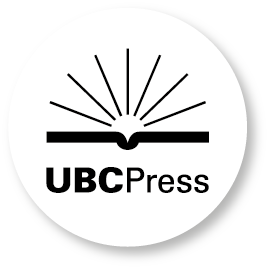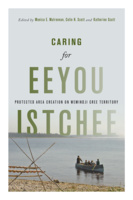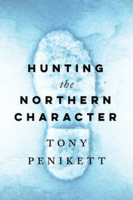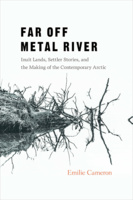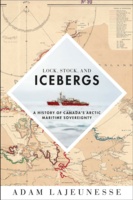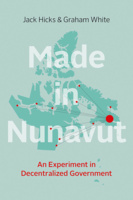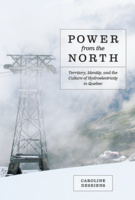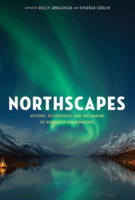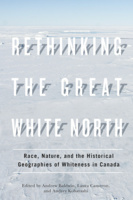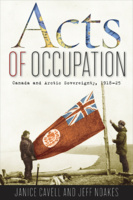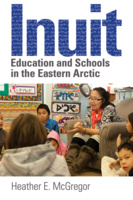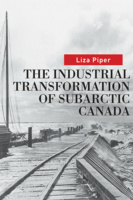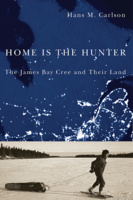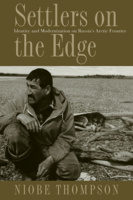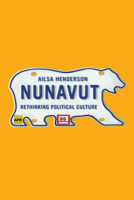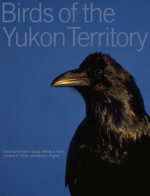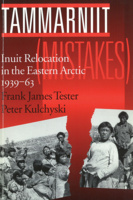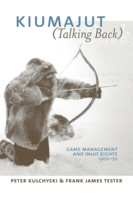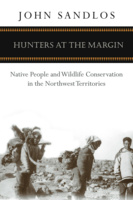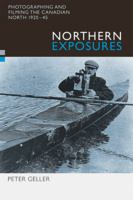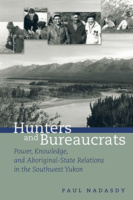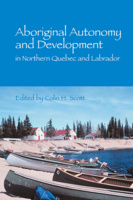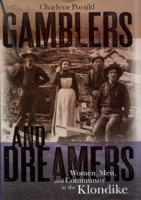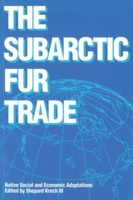Caring for Eeyou Istchee
Protected Area Creation on Wemindji Cree Territory
In Caring for Eeyou Istchee, Indigenous and non-Indigenous partners reveal how protected area creation presents a powerful vehicle for Indigenous stewardship, biological conservation, and cultural heritage protection.
Hunting the Northern Character
This deeply personal account of recent developments in the Canadian North tells the story of a region that leaders in Oslo, Ottawa, Moscow, and Washington often refuse to see and that only insiders fully know.
The Iconic North
Cultural Constructions of Aboriginal Life in Postwar Canada
The Iconic North explores how the “modern” South crafted cultural images of a “primitive” North that reflected its own preconceived notions and social, political, and economic interests.
Far Off Metal River
Inuit Lands, Settler Stories, and the Making of the Contemporary Arctic
Drawing on the story of the 1771 Bloody Falls massacre, human geographer Emilie Cameron explores the relationship between stories and colonialism, challenging readers to examine their perceptions of the contemporary Arctic and its peoples.
Lock, Stock, and Icebergs
A History of Canada’s Arctic Maritime Sovereignty
Lock, Stock, and Icebergs recounts the events, pressures, and behind-the-scenes negotiations that shaped Canada’s legal claim to the Northwest Passage and the waters of the Arctic Archipelago.
Made in Nunavut
An Experiment in Decentralized Government
Made in Nunavut provides a definitive account of how an innovative government was designed and implemented in Canada’s Eastern and Central Artic.
Power from the North
Territory, Identity, and the Culture of Hydroelectricity in Quebec
This book explores how French Canada’s aspirations migrated north with natural resource development, creating a culture of hydroelectricity that continues to shape territorial planning and relations with Aboriginal peoples in the province.
Northscapes
History, Technology, and the Making of Northern Environments
Northscapes examines concepts of North and the way in which different northern environments are shaped by the intersection of technology and human societies.
Rethinking the Great White North
Race, Nature, and the Historical Geographies of Whiteness in Canada
Rethinking the Great White North explores the troubling side of the images of whiteness and wilderness that are so central to Canadian national identity.
Acts of Occupation
Canada and Arctic Sovereignty, 1918-25
This fascinating tale of the rivalries and intrigues that played out as Canada secured the Arctic illuminates an under-explored era in Canadian foreign policy.
Inuit Education and Schools in the Eastern Arctic
The first history of educational policy, practice, and decision making in the Eastern Arctic, now Nunavut.
The Industrial Transformation of Subarctic Canada
A revealing history of human impact in the Canadian North, this book focuses on the causes and consequences of the industries that replaced the fur trade.
Home Is the Hunter
The James Bay Cree and Their Land
The James Bay Cree lived in relative isolation until 1970, when Northern Quebec was swept up in the political and cultural changes of the Quiet Revolution. Home Is the Hunter presents the historical, environmental, and cultural context from which this recent story grows.
Settlers on the Edge
Identity and Modernization on Russia's Arctic Frontier
Deeply researched and eloquently written, Settlers on the Edge ... makes an important and long-overdue contribution to our understanding of who belongs in the North.
– Farley Mowat
Nunavut
Rethinking Political Culture
Original and provocative, Nunavut explores political attitudes, behaviour, and institutions in Nunavut before, during, and after the creation of the new territory, challenging our understandings of how political cultures are generated and sustained.
Birds of the Yukon Territory
The result of a decade-long project, this lavishly illustrated book presents a wealth of information on bird distribution, migration and breeding chronology, habitat use, and on conservation concerns in the Yukon.
Tammarniit (Mistakes)
Inuit Relocation in the Eastern Arctic, 1939-63
Kiumajut (Talking Back)
Game Management and Inuit Rights, 1900-70
Examines Inuit relations with the Canadian state, with a particular focus on regulating Inuit based on government animal counting methods, and the emerging regime of government intervention.
Hunters at the Margin
Native People and Wildlife Conservation in the Northwest Territories
Hunters at the Margin examines the conflict in the Northwest Territories between Native hunters and conservationists, arguing that game regulations and national parks helped assert state authority over traditional hunting cultures.
Northern Exposures
Photographing and Filming the Canadian North, 1920-45
Illustrated throughout with archival photographs, this book examines the photographic and film practice of the Canadian government, the Anglican Church of Canada, and the Hudson’s Bay Company, the three major colonial institutions involved in the arctic and sub-arctic.
Hunters and Bureaucrats
Power, Knowledge, and Aboriginal-State Relations in the Southwest Yukon
A timely anthropological examination of the effect of land claims settlements and co-management of resources on the Kluane First Nation of the Southwest Yukon.
Aboriginal Autonomy and Development in Northern Quebec and Labrador
The essays in this volume illuminate key conditions for autonomy and development: the definition and redefinition of national territories as cultural orders clash and mix; control of resource bases upon which northern economies depend; and renewal and reworking of cultural identity.
Un/Covering the North
News, Media, and Aboriginal People
This book provides a comprehensive survey of communications in the circumpolar region, focusing on the Canadian Arctic and sub-Arctic but also looking at the circumpolar North (Alaska, Siberia, Greenland, and the Nordic/Saami nations).
Gamblers and Dreamers
Women, Men, and Community in the Klondike
Gamblers and Dreamers tackles some of the myths about the history of the North in the era of the gold rush.
The Social Life of Stories
Narrative and Knowledge in the Yukon Territory
In this illuminating study of indigenous oral narratives, Julie Cruikshank moves beyond the text to explore the social power and significance of storytelling.
As Their Natural Resources Fail
Native Peoples and the Economic History of Northern Manitoba, 1870-1930
In this groundbreaking study, Frank Tough examines the role of Native peoples, both Indian and Metis, in the economy of northern Manitoba from Treaty 1 to the Depression.
The Klondike Stampede
This classic in Yukon gold rush literature was originally published in 1900 and has long been out of print.
Gold at Fortymile Creek
Early Days in the Yukon
Michael Gatesfollows the first gold-seekers from their arrival in 1873 until the stampede to the Klondike in 1896, capturing the essence of these early years of the gold rush and chronicling the trials and successes of the hardy individualists who searched for gold in the wilderness.
Whose North?
Political Change, Political Development, and Self Government in the Northwest Territories
This provides the context for a better understanding of these issues and traces the evolution of an innovative, increasingly indigenous, governmental process.
